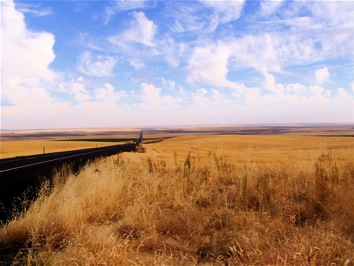Odessa Economics




ODESSA ECONOMICS
The Odessa Subarea encompasses 170,000 acres of irrigated farmland, where potatoes, peas and other water-dependent crops are grown. 121,000 of those acres fall within the “second-half” boundaries of the Columbia Basin Project. The Odessa Subarea also comprises another several hundred thousand acres of dryland farms, primarily growing wheat. Although agricultural production has significant value both locally and to the Washington state economy, the actual value of crops grown in the Odessa Subarea is unknown.
The Washington Potato Commission paid for a 2005 WSU study that concludes that irrigated potato agriculture in the Odessa area is worth hundreds of millions of dollars to the state’s agricultural economy. The WSU study examined three scenarios, ranging from gradual loss of potato production in the Odessa to a “worst case” scenario in which all potato production in all four counties (both within the Odessa and in the Columbia Basin Project) ceases production simultaneously and cannot be replaced.
Even the authors admit the worst case scenario is highly unlikely. They concluded that: “In the real world, the process of adjustment would involve the ability of the growers to grow potatoes in different regions of the Columbia basin or in other counties that would fit the needs of the processors. Also important would be the ability of the processors to adjust their production process to potato quality differences and still earn an acceptable return. Experience has shown growers have considerable ability to adapt to new situations by adjusting production methods, varieties grown, and location of production.”
Irrigated farming, Odessa subarea.
The WSU study concludes that the local economy would adjust to loss of Odessa potatoes and the regional economy would Nonetheless, Odessa irrigation advocates and, more disturbingly the governor’s office and the U.S. Bureau of Reclamation have cited the worst-case scenario ($630 million annual loss) as gospel truth. There has been no critical, public discussion of the projected economic impacts associated with loss of irrigated acreage in the Odessa Subarea.
Dry land farming is a common and viable method for growing wheat in the Odessa area. However, there has been no study or public discussion of the option of Odessa irrigated farms reverting to dry land farming as a sustainable solution to the loss of groundwater in the region. Nor has there been study of the costs, private and public, of irrigating from deep wells in a declining groundwater system.
Dry-land wheat fields, eastern Washington.




“ Experience has shown growers have considerable ability to adapt to new situations by adjusting production methods, varieties grown, and location of production.”